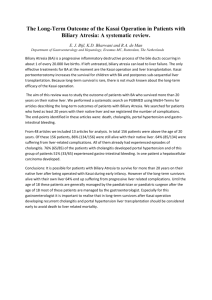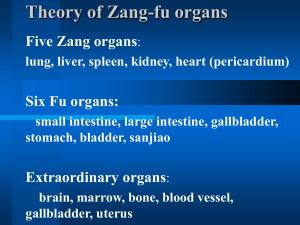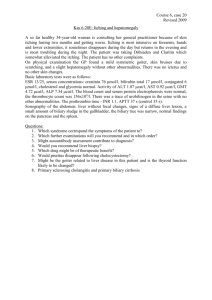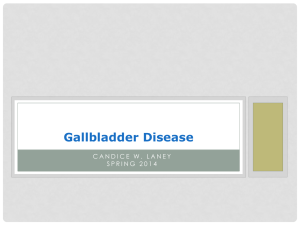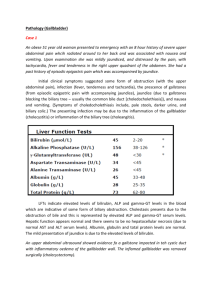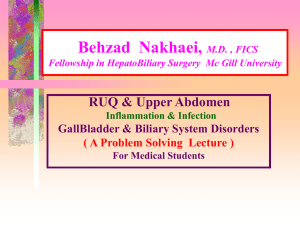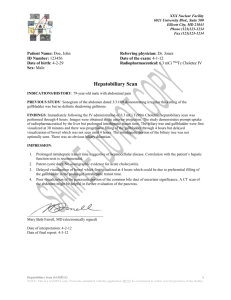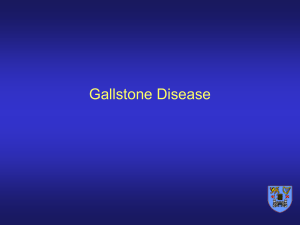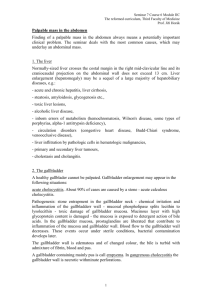Seminar 6
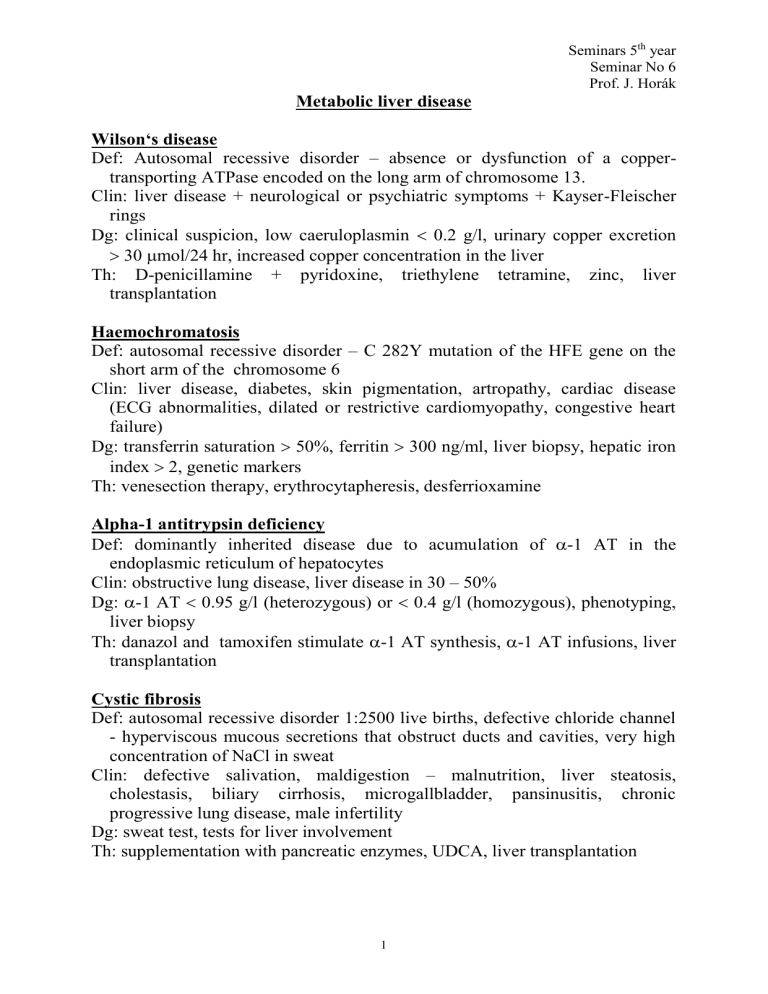
Seminars 5 th
year
Seminar No 6
Prof. J. Horák
Metabolic liver disease
Wilson‘s disease
Def: Autosomal recessive disorder – absence or dysfunction of a coppertransporting ATPase encoded on the long arm of chromosome 13.
Clin: liver disease + neurological or psychiatric symptoms + Kayser-Fleischer rings
Dg: clinical suspicion, low caeruloplasmin
0.2 g/l, urinary copper excretion
30
mol/24 hr, increased copper concentration in the liver
Th: D-penicillamine + pyridoxine, triethylene tetramine, zinc, liver transplantation
Haemochromatosis
Def: autosomal recessive disorder – C 282Y mutation of the HFE gene on the short arm of the chromosome 6
Clin: liver disease, diabetes, skin pigmentation, artropathy, cardiac disease
(ECG abnormalities, dilated or restrictive cardiomyopathy, congestive heart failure)
Dg: transferrin saturation
50%, ferritin
300 ng/ml, liver biopsy, hepatic iron index
2, genetic markers
Th: venesection therapy, erythrocytapheresis, desferrioxamine
Alpha-1 antitrypsin deficiency
Def: dominantly inherited disease due to acumulation of
-1 AT in the endoplasmic reticulum of hepatocytes
Clin: obstructive lung disease, liver disease in 30 – 50%
Dg:
-1 AT
0.95 g/l (heterozygous) or
0.4 g/l (homozygous), phenotyping, liver biopsy
Th: danazol and tamoxifen stimulate
-1 AT synthesis,
-1 AT infusions, liver transplantation
Cystic fibrosis
Def: autosomal recessive disorder 1:2500 live births, defective chloride channel
- hyperviscous mucous secretions that obstruct ducts and cavities, very high concentration of NaCl in sweat
Clin: defective salivation, maldigestion – malnutrition, liver steatosis, cholestasis, biliary cirrhosis, microgallbladder, pansinusitis, chronic progressive lung disease, male infertility
Dg: sweat test, tests for liver involvement
Th: supplementation with pancreatic enzymes, UDCA, liver transplantation
1
Seminars 5 th
year
Seminar No 6
Prof. J. Horák
Hepatic porphyrias
Def: a group of disorders of haem biosynthesis
Clin: Acute: acute intermittent porphyria, hereditary coproporphyria, variegate porphyria
Chronic: porphyria cutanea tarda
Th: depending on the type
Diseases of the biliary tree
Cholelithiasis
Acute cholecystitis
About 90% of cases are caused by a stone – acute calculous cholecystitis.
Pathogenesis: stone entrapment in the gallbladder neck → chemical irritation and inflammation of the gallbladder wall in bile outflow obstruction → mucosal phospholipase splits lecithin to lysolecithin → toxic damage of the gallbladder mucosa. Protective mucus with high glycoprotein contents is damaged → the mucosa is exposed to detergent action of bile salts. Prostaglandins are liberated in the gallbladder wall and contribute to the inflammation of mucosa and the gallbladder wall. Blood flow to the gallbladder is diminished. These events are sterile, bacterial contamination appears later on.
The gallbladder wall is edematous with colour changes, the bile is turbid with admixture of fibrin, blood and pus. Gallbladder containing mostly pus is called empyema. In gangrenous cholecystitis the gallbladder wall is necrotic with small perforations.
Microbial pathogens: intestinal aerobe bacteria (E. coli, klebsiella,
Streptococcus faecalis, Pseudomonas aeruginosa
In 40% anaerobes – bacteroides, clostridia
Acute acalculous cholecystitis
It comes usually in the following situations:
conditions following extensive surgical procedures outside of the hepatobiliary region,
severe trauma,
large burns,
multiple organ failure,
sepsis,
long-term parenteral nutrition,
following a delivery.
Less painful forms are found in systemic vasculitis, general atherosclerosis and
AIDS.
2
Seminars 5 th
year
Seminar No 6
Prof. J. Horák
Complications: empyema, gangrene, perforation, fistula formation, biliary ileus, biliary peritonits, porcelain gallbladder
Dg: history, clinical and laboratory findings, ultrasound, cholescintigraphy
Th: nothing per os, nasogastric tube, antibiotics, analgesics, surgery
Choice of antibiotics: ureidopenicillins (mezlocillin, piperacillin, azlocillin), ampicillin, cephalosporins, cotrimoxazole, ciprofloxacine, metronidazole
Chronic cholecystitis
Cholangitis
acute nonsuppurative
acute suppurative
recidiving bacterial cholangitis
primary sclerosing cholangitis
parasitic cholangitis
Complications of cholangitis
pyogenic liver abscess
biliary peritonitis
endotoxemia, sepsis, DIC
acute tubular necrosis
secondary biliary cirrhosis
Diagnosis of cholangitis
history
Charcot‘s trias
laboratory findings
ultrasound, ERCP
Treatment of acute cholangitis
start immediately
biliary decompression (endoscopic, percutaneous, surgical)
antibiotics
3

